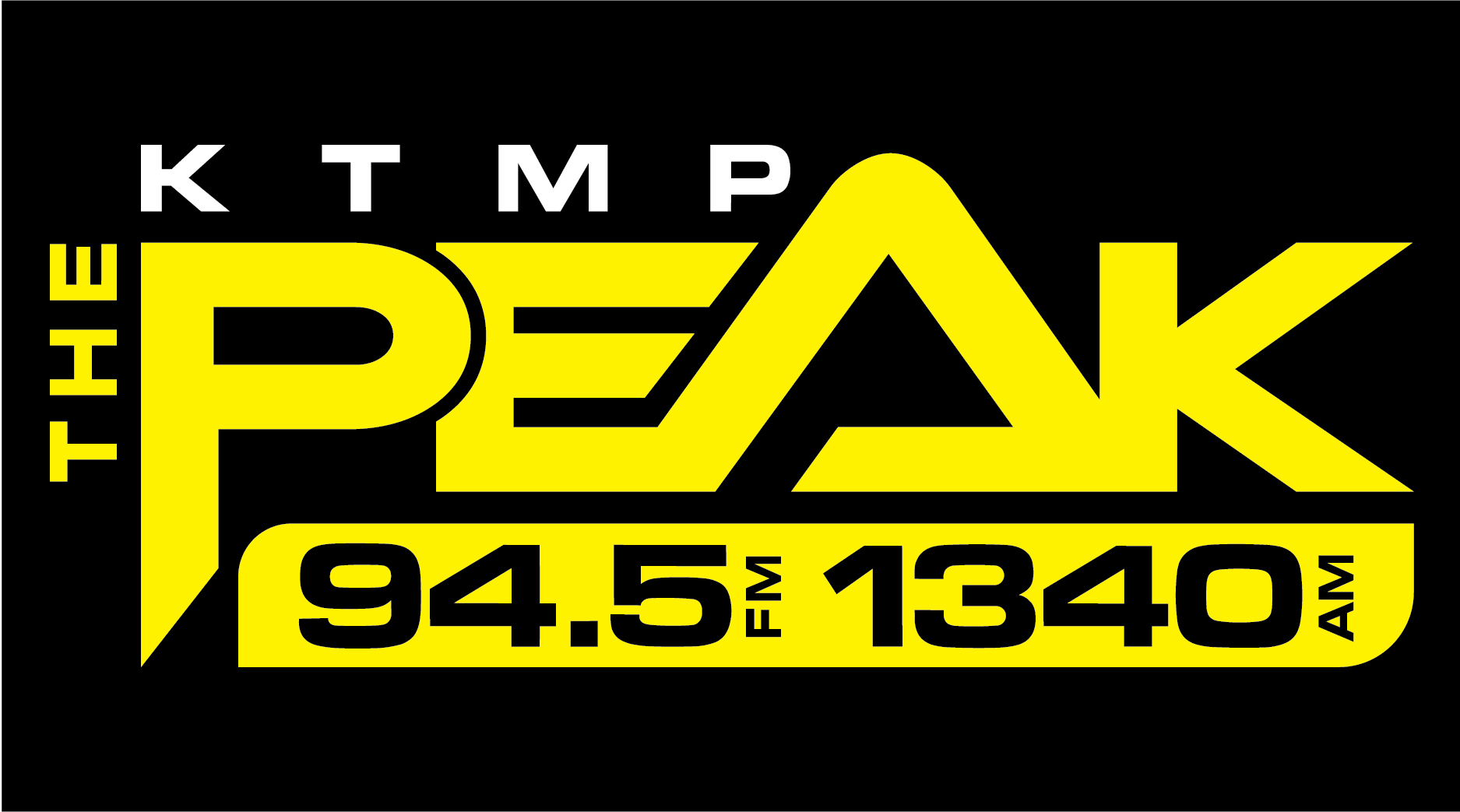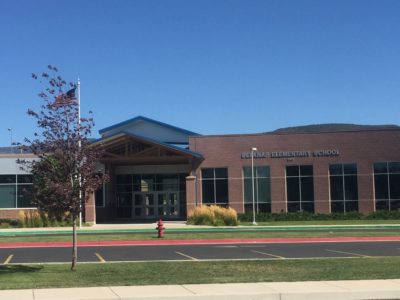BEAVER, Utah (AP) — Principal Brad Harris, half-apologizing, notes the sign on the wall that declares Belknap Elementary School as a Blue Ribbon School by the U.S. Department of Education.
“The U.S. Department of Education hasn’t sent us our signs yet so we made our own,” Harris said.
Give Harris his due. The former Belknap Elementary teacher turned principal is justifiably proud of the school’s designation as one of the top-performing elementary schools in the state, if not the nation.
Belknap, along with Peruvian Park Elementary School in Sandy and Salt Lake’s Hawthorne Elementary School, were recently designated as “exemplary high performing schools,” by the Education Department’s now 36-year-old national recognition program.
But unlike Peruvian Park and Hawthorne, which are magnet schools in Salt Lake County, Belknap is a rural Title I school that serves about 480 students, including 57 percent who are economically disadvantaged. The school also serves a growing number of English language learners.
Although small and rural, Belknap Elementary School sets the pace for standardized test scores statewide, something Beaver County School District Superintendent Ray Terry attributes to the school’s deep commitment to learning, whether it’s a kindergartener mastering the fundamentals of reading or veteran teachers mentoring new hires.
“It’s a comprehensive, joint effort we’ve developed over the years. The last four years, they’ve consistently gotten better and better,” Terry said.
In the most recent SAGE end-of-level test results Elementary posted some of the highest scores in the state.
Seventy-three percent of Belknap students were proficient in math in 2018, compared to the statewide average of 46 percent. In language arts, 71 percent of Belknap students were proficient, compared to the state average of 45 percent. Sixty-six percent of Belknap’s students were proficient in science while statewide, an average of 47 percent met the mark.
Not only do Belknap Elementary’s scores far exceed state averages, they have grown year to year the past four years, with the exception of a slight dip in science proficiency in 2018.
Terry said maintaining growth is a matter of stubborn pride and a commitment by each teacher that “they’re not going to be one that causes us to go backward.”
When the district hires new educators and paraprofessionals, they are made aware of the district’s high expectations.
But Beaver County School District provides new hires with supports to help them be successful, Terry said.
“We dedicate 3 percent of our budget to the improvement of our teachers. We have a new teacher program for three years. They get support and training from mentor teachers because we want them to stay but also because we also want them to get better. By the time they’ve reached their fourth year, we’re feeling really confident we’ve got the workings of a master teacher,” he said.
There’s no secret recipe to the school’s success, said literacy specialist LaRayne Brown. The school relies heavily on data to track students, teaches its research-backed curriculum to fidelity and employs highly trained paraprofessionals who work with higher-performing students while certified teachers work with students who are struggling.
“That consistency is so important,” Brown said.
Every child in Belknap’s lower grades reads aloud to a teacher or paraprofessional daily so educators have constant feedback how each child is performing.
At the end of the school day, each child takes a book home selected for them from the school’s “leveled” library. They’re expected to read the book to a parent and return with a signed slip from a parent or guardian to confirm they’ve done so.
Classes that reach their goals are rewarded with pizza and root beer float parties, Brown says. Students who exhibit good citizenship are invited to eat with Harris in the “Principal’s Club.
All educators meet regularly — if not daily — in professional learning communities to share the best teaching practices and collaborate on strategies to help students who are struggling, Harris said.
“Teachers are constantly talking about every student on the grade level. They care about the whole child,” Harris said.
Many of Belknap Elementary’s strategies could be replicated elsewhere, but the architecture of the school unquestionably helps teachers and paraprofessionals instruct in small groups. The school has large classrooms and each wing has a common area where entire grades can gather for group activities, which enables grade-level educators to teach the entire grade in science or social studies, for instance.
Belknap integrates technology into its learning with two computer labs used by all grade levels. Each child grades 3-6 takes home a Chromebook to do homework, study and conduct research. The laptops use school filters to help ensure students cannot access inappropriate materials, Harris said.
The school has a steady stream of visitors who want to know what the school is doing to has set the pace for other elementary schools. This past week, Gov. Gary Herbert paid a visit.
Some things can’t be duplicated, such as Beaver’s sense of community.
In a town of 3,000, educators invariably run into students and their parents at the grocery store, Terry said.
They may attend the same church with the families in the school district, coach their children in sports or lead their scout groups.
“A lot of times they’re asking, ‘Are you coming to my game on Saturday?’ Every time you go, you always want to make sure that they saw you (and tell them) ‘Nice job’ and that sort of thing. That’s the sense of community right there,” Harris said.
While Belknap Elementary is riding an upward trajectory, it went through a period of struggle that forced the district to re-evaluate its teaching practices, curriculum and professional development.
When the state moved to Student Assessment of Growth and Excellence or SAGE testing, one classroom had a score indicating just 9 percent of students were proficient.
“We knew we could do better. We didn’t feel like we had done justice to our students,” Brown said.
It marked the beginning of the district’s instructional coaching “to help teachers be the best they can be,” she said.
“We actually took one teacher who scored a nine up to a 63 the next year,” Brown said. She credits the teacher for working hard to update and improve her teaching methods. She retired the following year but it was important for her, and her students, that she left on a high note, Brown said.
No question, much of Belknap’s success is chronicled in test score data. But there are also successes that assessments don’t measure.
Like the father of one formerly struggling student who stood outside his classroom, observing his son engaged in learning.
“He just stood in the hall. He could not even talk. He just sobbed. He said, ‘You have changed my son’s life, not just his academics but his life because now he comes home and he feels good about himself and he wants to learn. He gets in and does his homework.’
“He can read and he isn’t still quite to grade level but you go in and he’s feeling success. He is. He’s growing and achieving. That’s our real paycheck, isn’t it?” Brown said.
Terry said Minersville Elementary also performs well above the state average on standardized test scores.
One of the district’s goals is getting its high school on a similar track, Terry said.
“We’re not there yet. It’s a challenge, but it’s a fun one,” he said.








